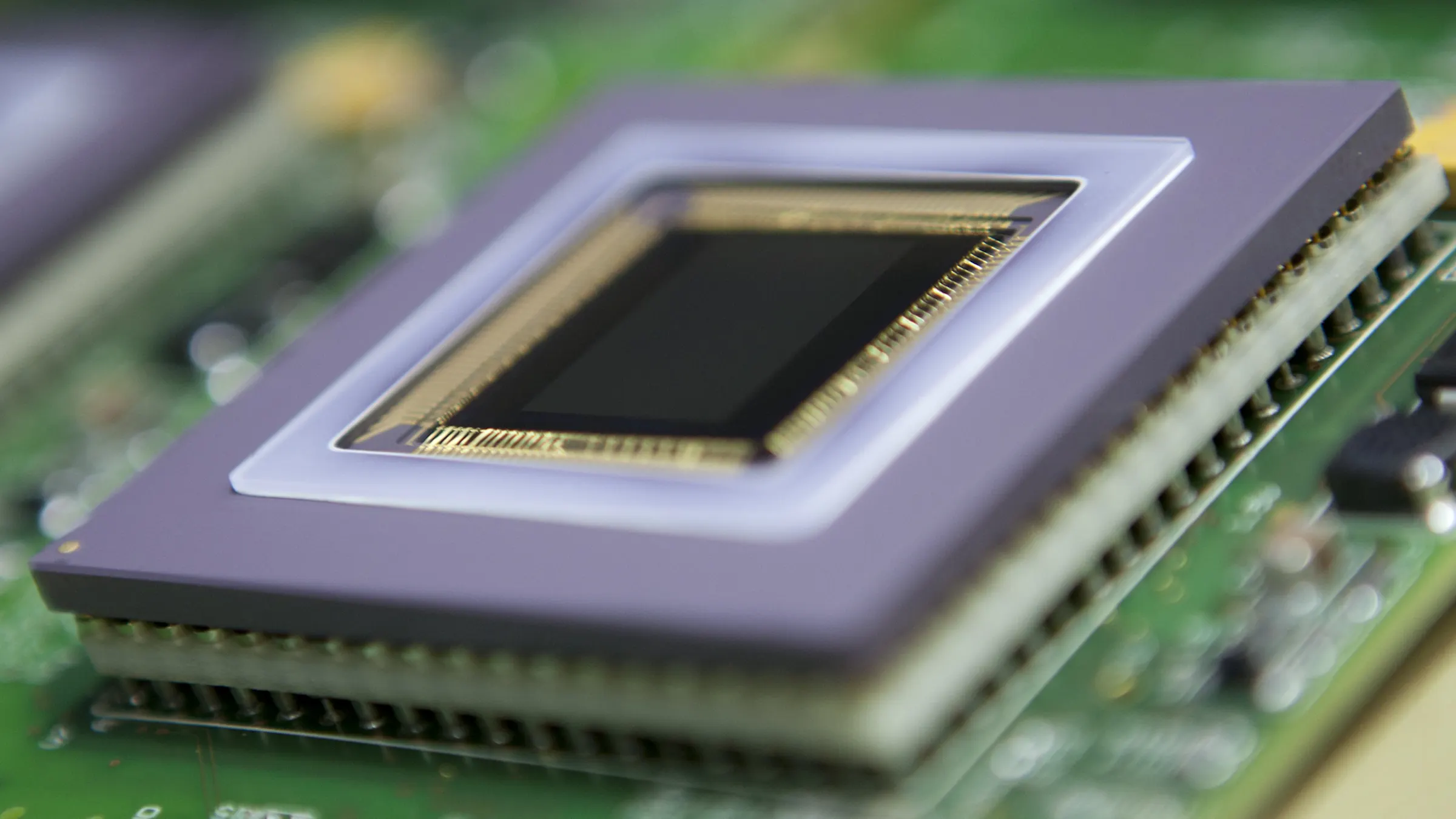CMOS Sensors: Future-proof Technology
CMOS sensor technology is widely used in industrial image processing. Find out more about the advantages of CMOS sensors, what needs to be considered when integrating CMOS-based cameras and which Basler cameras are equipped with a CMOS sensor.

What is the best way to compare modern CMOS cameras?
In our white paper, we compare modern CMOS sensors by examining the performance of industrial cameras that use the same CMOS sensor.
What are the differences for the camera manufacturer when integrating new CMOS sensors?
What distinguishes effective CMOS sensor integration?
What role does EMVA data play in image quality?
How do I check firmware functions and data transmission stability?
How do price differences occur despite using the same sensor?
What is a CMOS sensor?
A CMOS sensor (Complementary Metal-Oxide Semiconductor) is used in digital cameras and other devices for image recording. It consists of a matrix of tiny photosensors that convert light into electrical signals. Each light-sensitive cell in a CMOS image sensor has its own charge amplifier. This technology enables – compared to ccd sensors – a significantly higher data transfer rate from the sensor and also leads to an increase in the maximum frame rate of the camera.
Although CMOS sensors used to have a lower sensitivity due to the limitation of the light-sensitive area in favor of the electronics, this is no longer the case today thanks to the implementation of microlens arrays.
CMOS sensors in image processing
CMOS sensors have largely replaced their CCD counterparts in image processing since Sony announced in 2015 that it would cease production of these sensors. Today, CMOS sensors outperform CCD sensors in many areas. With further developments such as Sony's IMX sensor series and Global Shutter and Rolling Shutter sensors, there is the right CMOS camera for almost every application.
Practical examples: Why CMOS sensors are suitable for your application
In our video, our expert Thies Moeller uses practical examples to explain the advantages of this sensor technology for various areas of application, e.g. factory automation, traffic or medicine. Take a look now!
Benefits of cameras with high-performance CMOS sensors
CMOS sensors have improved significantly in recent years, particularly in two important properties of industrial cameras: speed and noise characteristics. In addition, the improvements in CMOS technology and the good price/performance ratio are making CMOS sensors increasingly attractive for applications in industrial image processing. In particular, the very high frame rates with almost constant image quality characterize the current CMOS sensor generation.
What characterizes the latest CMOS sensors
High speeds (frame rates)
High resolution (number of pixels)
Strong dynamic performance
Low power consumption
Improved noise performance
Improved quantum efficiency
Improved color concepts
Good price/performance ratio
What’s important when integrating the latest CMOS-based cameras?
Integrating a CMOS camera to replace CCD sensors is simpler than expected, especially when you choose standard-compliant hardware and software. Because camera manufacturers take care of the entire sensor integration including image quality optimization, all you need to do when choosing the right CMOS camera is to:
Determine the correct resolution of the camera:
The required resolution depends on the details you need to make visible in your images.Define the required camera interface:
The choice of an interface depends on the required cable length, bandwidth, necessary frame rates and real-time capabilities and PC hardware availability. Our Interface Advisor helps you find the best interface for your application.Choose lens and lighting:
Changing the sensor format also involves changing the lens. Our Lens Selector makes finding a new lens easy. Lighting must only be adjusted if the sensitivity of the new sensor is different from the previous one.Integration effort for software and camera control:
Cameras complying with common standards such as GenICam, for example, or interface standards like USB3 Vision or GigE Vision, offer uncomplicated integration.
CMOS sensors: Further information on integration

Modern CMOS cameras as a replacement for CCD cameras
For more information on switching to CMOS cameras, download our free White Paper "Modern CMOS cameras as a replacement for CCD cameras".
White Paper on the switch to CMOS camerasBasler cameras with CMOS sensors
The following Basler camera series contain models with CMOS sensors: